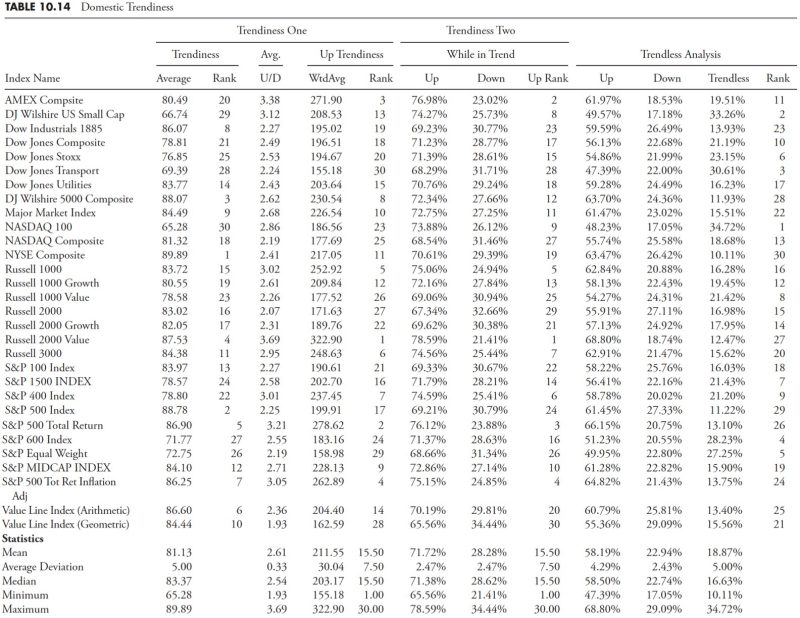April 5, 2024
Uncovering Trends: In-Depth Market Research and Analysis – Part 4
 In the previous articles of this series, we discussed the significance of trend analysis in market research and analysis. In this continuation, we will delve deeper into different aspects of trend analysis and how businesses can leverage this information to make informed decisions. Let's explore further:
1. **Sales and Revenue Trends**: One crucial aspect of trend analysis is examining sales and revenue trends over a period. By identifying patterns in sales figures, businesses can anticipate future demand, forecast revenues, and adjust their marketing strategies accordingly. For instance, a retail store might notice a consistent increase in sales during the holiday season and use this information to plan promotions and inventory levels for the upcoming years.
2. **Consumer Behavior Trends**: Understanding consumer behavior trends is essential for businesses to tailor their products or services to meet evolving customer preferences. Trend analysis can reveal shifts in consumer purchasing habits, such as the growing preference for online shopping over traditional retail or the increasing demand for eco-friendly products. By staying ahead of these trends, businesses can remain competitive and relevant in the market.
3. **Competitor Analysis Trends**: Monitoring trends in competitor activities, such as product launches, marketing campaigns, or pricing strategies, can provide valuable insights for businesses. Trend analysis can help identify emerging competitors, potential threats, and areas of competitive advantage. By benchmarking against industry trends and competitor performance, businesses can craft strategies to differentiate themselves and stay ahead in the market.
4. **Technology Adoption Trends**: In today's digital age, technology plays a significant role in shaping consumer behavior and business operations. Trend analysis can help businesses track technology adoption trends, such as the increasing use of mobile devices for shopping, the rise of artificial intelligence in customer service, or the shift towards cloud-based business solutions. By embracing technology trends, businesses can streamline operations, enhance customer experience, and drive innovation.
5. **Social and Cultural Trends**: Social and cultural trends have a profound impact on consumer preferences and industry dynamics. Trend analysis can uncover shifts in societal values, lifestyle choices, or cultural influences that shape market demand. For example, the growing focus on sustainability has led to increased demand for eco-friendly products across various industries. Businesses that align their strategies with prevailing social and cultural trends can better resonate with their target audience and build a loyal customer base.
In conclusion, trend analysis is a powerful tool for businesses to gain insights into market dynamics, consumer behavior, competitive landscape, and technological advancements. By analyzing trends across various dimensions, businesses can make well-informed decisions, anticipate market shifts, and capitalize on emerging opportunities. Incorporating trend analysis into market research and analysis processes is essential for staying competitive and adapting to the evolving marketplace.
In the previous articles of this series, we discussed the significance of trend analysis in market research and analysis. In this continuation, we will delve deeper into different aspects of trend analysis and how businesses can leverage this information to make informed decisions. Let's explore further:
1. **Sales and Revenue Trends**: One crucial aspect of trend analysis is examining sales and revenue trends over a period. By identifying patterns in sales figures, businesses can anticipate future demand, forecast revenues, and adjust their marketing strategies accordingly. For instance, a retail store might notice a consistent increase in sales during the holiday season and use this information to plan promotions and inventory levels for the upcoming years.
2. **Consumer Behavior Trends**: Understanding consumer behavior trends is essential for businesses to tailor their products or services to meet evolving customer preferences. Trend analysis can reveal shifts in consumer purchasing habits, such as the growing preference for online shopping over traditional retail or the increasing demand for eco-friendly products. By staying ahead of these trends, businesses can remain competitive and relevant in the market.
3. **Competitor Analysis Trends**: Monitoring trends in competitor activities, such as product launches, marketing campaigns, or pricing strategies, can provide valuable insights for businesses. Trend analysis can help identify emerging competitors, potential threats, and areas of competitive advantage. By benchmarking against industry trends and competitor performance, businesses can craft strategies to differentiate themselves and stay ahead in the market.
4. **Technology Adoption Trends**: In today's digital age, technology plays a significant role in shaping consumer behavior and business operations. Trend analysis can help businesses track technology adoption trends, such as the increasing use of mobile devices for shopping, the rise of artificial intelligence in customer service, or the shift towards cloud-based business solutions. By embracing technology trends, businesses can streamline operations, enhance customer experience, and drive innovation.
5. **Social and Cultural Trends**: Social and cultural trends have a profound impact on consumer preferences and industry dynamics. Trend analysis can uncover shifts in societal values, lifestyle choices, or cultural influences that shape market demand. For example, the growing focus on sustainability has led to increased demand for eco-friendly products across various industries. Businesses that align their strategies with prevailing social and cultural trends can better resonate with their target audience and build a loyal customer base.
In conclusion, trend analysis is a powerful tool for businesses to gain insights into market dynamics, consumer behavior, competitive landscape, and technological advancements. By analyzing trends across various dimensions, businesses can make well-informed decisions, anticipate market shifts, and capitalize on emerging opportunities. Incorporating trend analysis into market research and analysis processes is essential for staying competitive and adapting to the evolving marketplace.
If you would like to delve into the world of investment topics , go to our partner project Wall Street Wizardry


